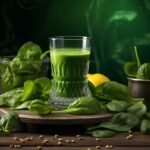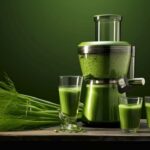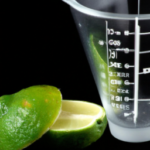Juice Tips and Tricks
How Much Juice Per Lime
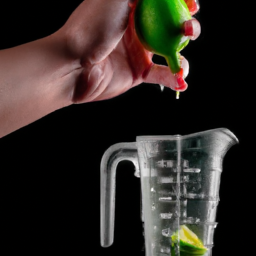
As a person who frequently incorporates lime juice into my culinary creations and beverages, I recognize the significance of extracting the proper quantity of juice from every lime. Maintaining consistency and ensuring quality are paramount, especially for recipes that demand exact measurements.
That’s why I’ve done my research on how much juice per lime you can expect and the factors that can affect it. When it comes to measuring lime juice, it’s not as simple as just squeezing a lime and hoping for the best. There are many variables that can influence how much juice you get from each lime, including the type of lime, its ripeness, and the tools you use to extract the juice.
As someone who wants to ensure the best results in my cooking and drinks, I’ve delved into these factors and have some insights to share. So, if you’re like me and want to maximize your lime juice yield, stay tuned for some useful tips and techniques.
Key Takeaways
- The amount of juice per lime depends on factors such as ripeness, pressure applied and tools used, with an average yield of 0.5-2.5 oz.
- Best practices for juicing limes include using room temperature limes, a citrus juicer, and consistent technique, while ripe limes should be heavy with fragrant citrus scent.
- Tips for maximizing juice yield include choosing the right lime, using a citrus reamer/juicer, rolling on a hard surface, microwaving, cutting in half lengthwise, and using a fine mesh strainer.
- Lime juice is not only a flavorful addition to cooking, baking and cocktail-making, but also offers health benefits such as vitamin C, antioxidants and aiding digestion, and can be stored through refrigeration, freezing or canning.
Factors Affecting the Amount of Juice per Lime
When you squeeze a lime, the amount of juice you get can be affected by various factors. The ripeness of the lime plays a significant role in determining the amount of juice yield. If the lime is too ripe, it may have less juice content, and if it’s not ripe enough, it may not have reached its full potential.
Another factor that affects the juice yield is the amount of pressure you apply. If you squeeze the lime too hard, you may extract some bitter compounds from the lime peel, which can affect the flavor of the juice.
To ensure that you get the best juice yield from your limes, it’s essential to follow some best practices for lime juicing. First, make sure that the limes are at room temperature before juicing. This helps to soften the lime, making it easier to extract the juice.
Second, use a citrus juicer to extract the juice from the lime. This ensures that you get the most juice yield without any bitter compounds from the peel.
Finally, be consistent in your juicing technique to ensure that you get the same amount of juice yield from each lime. By following these best practices, you can ensure that you get the most out of your limes and use them to their full potential.
Now, let’s move on to the next section about the different types of limes.
Types of Limes
I want to talk about the different types of limes that affect the amount of juice per lime. Specifically, we’ll be discussing Key Limes, Persian Limes, and Bearss Limes.
It’s crucial to understand the differences between these types of limes in order to achieve consistency and quality control when measuring the amount of juice per lime.
Key Limes
You’ll be surprised at how much tangy juice those tiny key limes can yield! As a citrus fruit with a high acidity content, key limes are commonly used in cooking, baking, and cocktail-making. When it comes to lime harvesting techniques, key limes are hand-picked when they are still green and unripe. This is because key limes will continue to ripen and turn yellow even after they are harvested.
To paint a clearer picture, let’s take a look at this table comparing the juice yield of key limes versus the more common persian limes:
| Lime Type | Juice Yield (in ounces) per Lime |
|---|---|
| Key Lime | 0.5 – 1.5 |
| Persian Lime | 1.5 – 2.5 |
As you can see, key limes may be smaller in size, but they can pack a powerful punch in terms of tangy flavor. This is why it’s important to be consistent with the amount of juice extracted from each lime, especially when it comes to recipe measurements. Speaking of persian limes, let’s now move on to discussing the differences between key limes and persian limes in terms of taste and usage.
Persian Limes
Did you know that the larger and less acidic persian limes are often used in dishes and drinks that require a milder citrus flavor? As a lime farmer, I can attest to the fact that Persian lime cultivation is a delicate process that requires attention to detail and constant quality control.
These limes are typically grown in tropical and subtropical regions and need consistent irrigation, fertilization, and pest control in order to produce high-quality fruit.
In addition to being a staple ingredient in many cuisines, Persian limes also have numerous health benefits. They’re rich in vitamin C, antioxidants, and flavonoids, which can help boost the immune system and reduce the risk of chronic diseases.
With all these benefits, it’s no wonder why Persian limes are in high demand in the culinary and health industries. Speaking of demand, let’s move on to the next section about the popular Bearss limes.
Bearss Limes
Bearss limes, also known as Tahitian limes, are often mistaken for lemons due to their pale yellow-green color, but their juicy and acidic flesh sets them apart. As with any lime, it’s important to use the correct amount of juice to ensure consistency in flavor and quality.
Here are three things to keep in mind when juicing Bearss limes:
-
Bearss lime seasonality: These limes are typically available from May to September, with peak season in July and August. It’s important to use the freshest limes possible to get the best flavor and juiciness.
-
Bearss lime flavor profile: These limes have a less acidic flavor compared to other lime varieties, with a slightly sweet and floral taste. This makes them a great choice for cocktails and desserts.
-
Precise and accurate measurements: To ensure consistency in your recipes, it’s important to measure the amount of juice you extract from each lime. A good rule of thumb is to get about 1-2 tablespoons of juice per Bearss lime.
When juicing Bearss limes, it’s important to use the right tools to get the most juice out of each lime. Let’s take a look at some of the best tools for juicing limes.
Tools for Juicing Limes
To efficiently extract the most juice from your limes, you’re gonna need some proper tools. There are various juicing tools that you can use to extract lime juice, and each of them has its unique advantages and disadvantages. Some of the most common juicer types include manual and electric juicers, citrus reamers, and hand squeezers. The type of juicer you choose will depend on your personal preference, the amount of lime juice you need, and the consistency of the juice you want to achieve.
To give you a better idea of the different juicing tools available, here’s a table that outlines some of their features and benefits:
| Juicer Type | Features | Benefits |
|---|---|---|
| Manual Juicer | Handheld, easy to use | Perfect for small amounts of juice |
| Electric Juicer | Automatic, fast, and efficient | Best for large batches of juice |
| Citrus Reamer | Simple design, affordable | Ideal for squeezing small amounts of juice |
| Hand Squeezer | Easy to use, compact | Great for making a quick drink or two |
When it comes to extracting lime juice, consistency is key. To ensure that you get the best results, it’s important to use the right juicing tool for the job. Once you’ve extracted the juice, the next step is to choose ripe limes to get the most flavor and nutrients from your juice.
How to Choose Ripe Limes
Choosing ripe limes is like finding the perfect avocado – you want to squeeze them gently and feel for a slight give, indicating they’re ripe and ready to use. Here are a few tips for selecting the best limes:
- Look for limes that are heavy for their size. This means they contain more juice and are likely ripe.
- Check the color of the lime’s skin. A ripe lime will be bright green or yellowish-green. Avoid limes that are too green or too yellow.
- Smell the lime. A ripe lime will have a fragrant, citrusy scent.
- Avoid limes with soft or mushy spots, as they may be overripe or spoiled.
Knowing how to tell if a lime is ripe is crucial for ensuring the best flavor and consistency in your recipes. Once you have your ripe limes, it’s important to use them efficiently.
One of the best ways to use leftover lime juice is to freeze it in ice cube trays for later use in cocktails or marinades.
Now, let’s move on to the next step – juicing those limes.
How to Juice a Lime
When you’re making a recipe that calls for fresh lime juice, it’s important to know how to properly juice a lime to get the most out of its tangy flavor. While there are alternative methods, I prefer to use a traditional citrus juicer. This tool allows me to extract the maximum amount of juice from each lime with minimal effort.
To ensure consistency and quality control, I like to measure the amount of juice I get from each lime. The easiest way to do this is to use a measuring cup or spoon. According to my experience, on average, one lime produces about 2 tablespoons of juice. However, this can vary depending on the size and ripeness of the lime. Therefore, it’s important to taste and adjust the amount of juice added to a recipe accordingly. Using fresh lime juice has many benefits, including enhancing the flavor of dishes and providing a healthy dose of vitamin C.
How to Measure Lime Juice
Measuring lime juice is like creating a perfect balance in a recipe, where too little can leave a dish lackluster and too much can overpower its flavors. To ensure consistency and quality control, it’s important to measure the amount of lime juice used in a recipe accurately. Here are four steps to measuring lime juice:
-
Cut the lime in half: Before juicing a lime, cut it in half using a sharp knife or a citrus juicer.
-
Extract the juice: Squeeze the lime halves using a manual juicer, or use a reamer to extract the juice. You can also use a citrus press to get every last drop of juice from the lime.
-
Strain the juice: To remove any seeds or pulp, strain the lime juice through a fine mesh strainer or cheesecloth.
-
Measure the juice: Use a measuring cup or a tablespoon to measure the amount of lime juice needed for the recipe.
Alternative uses for lime juice include adding it to water for a refreshing drink, mixing it with honey as a natural cough remedy, or using it as a natural cleaning agent. Additionally, lime juice has several health benefits, including aiding digestion, boosting the immune system, and fighting against infections. By measuring the amount of lime juice accurately, you can ensure that you’re getting the full benefits of this citrus fruit.
Moving on to the next section, let’s talk about the average amount of juice per lime.
Average Amount of Juice per Lime
You’re in for a citrusy surprise – each lime is a tiny treasure trove of zesty goodness waiting to burst forth with every cut. The average amount of juice per lime can vary depending on the type of lime, its ripeness, and the lime squeezing techniques used.
Generally, a single lime can yield approximately 2 tablespoons of juice, but some limes may contain up to 3 tablespoons or more. To ensure consistency and quality control, it’s important to measure the juice accurately. This can be done using a citrus juicer or by hand-squeezing the lime with a fork or citrus press.
If you’re short on limes or prefer not to use them, there are also lime juice alternatives such as bottled lime juice or concentrated lime juice. However, it’s important to note that the taste and freshness may differ from using fresh limes.
By maximizing juice yield and using the right techniques, you can get the most out of each lime and elevate your dishes to the next level.
Tips for Maximizing Juice Yield
Now that we know the average amount of juice per lime, let’s talk about how to maximize the juice yield from each lime. As someone who uses lime juice frequently in my cooking and cocktails, I’ve found that a few tips and tricks can make a big difference in the amount of juice I’m able to extract from each lime.
First and foremost, it’s important to choose the right type of lime. Mexican limes, also known as key limes, are smaller and juicier than the larger Persian limes commonly found in grocery stores. Additionally, using a citrus reamer or juicer can help to extract as much juice as possible.
Here are a few more tips for maximizing flavor and yield when working with limes:
- Roll the lime on a hard surface before cutting it to loosen the juice.
- Microwave the lime for 10-20 seconds before juicing to soften the fruit and make it easier to extract the juice.
- Cut the lime in half lengthwise, rather than crosswise, to expose more of the juice sacs.
- Use a fine mesh strainer to remove any seeds or pulp that may have gotten into the juice.
By following these tips, you can ensure that you’re getting the most out of each lime and maximizing the flavor in your recipes. However, if you find yourself without any fresh limes on hand, there are also a number of lime juice substitutes that can work in a pinch. But more on that in the next section.
When it comes to storing lime juice, there are a few important things to keep in mind.
Storing Lime Juice
To keep your lime juice fresh and flavorful, it’s important to know the best ways to store it. Storing lime juice properly can prevent oxidation, which can cause the juice to lose its flavor and nutrients. Here are some tips on how to store lime juice:
| Method | Description | Pros | Cons |
|---|---|---|---|
| Refrigeration | Store in airtight container and refrigerate. | Keeps juice fresh for up to a week. | May cause juice to lose some flavor. |
| Freezing | Freeze in ice cube trays or freezer-safe container. | Can be stored for up to 6 months. | Thawing may cause separation. |
| Canning | Use canning jars and follow proper canning procedures. | Can be stored for up to a year. | Requires proper equipment and technique. |
Consistency and quality control are important when storing lime juice. Be sure to use precise and accurate measurements when storing and labeling, and always use fresh, high-quality limes. With the proper storage methods, you can enjoy fresh and flavorful lime juice for all your recipe needs.
Now that you know how to store your lime juice properly, let’s move on to some delicious recipes that use this versatile ingredient.
Recipes Using Lime Juice
Let’s explore some mouth-watering recipes that incorporate the zesty flavor of lime juice, adding a burst of freshness to any dish. Lime juice is not only a delicious addition to meals, but it also offers a range of health benefits. It’s packed with Vitamin C, which helps boost immunity and improve skin health. Additionally, it can aid in digestion and has anti-inflammatory properties.
If you’re looking for a substitute for lime juice, lemon juice is a great option. However, keep in mind that the flavors are slightly different, so it may alter the taste of the dish.
Now, onto some delicious recipes that use lime juice:
-
Lime and cilantro rice: Cook white rice with lime juice, chopped cilantro, and a bit of salt for a flavorful and easy side dish.
-
Lime marinated shrimp tacos: Marinate shrimp in lime juice, garlic, and chili powder before cooking and serving in a tortilla with your favorite toppings.
-
Lime and avocado salsa: Mix diced avocado, tomatoes, red onion, and lime juice for a fresh and healthy dip.
-
Lime and honey glazed chicken: Brush chicken with a mixture of lime juice, honey, garlic, and soy sauce before baking for a tasty and tangy main dish.
Remember, when using lime juice in your recipes, it’s important to be precise with measurements to ensure consistency and quality control. So, grab your lime and get cooking!
Frequently Asked Questions
How many calories are in lime juice?
Lime juice nutrition varies depending on preparation. For accurate calorie count, measure ingredients precisely. Lime juice recipes benefit from consistency and quality control. Technical language ensures accurate measurements and consistent results.
Can lime juice be used as a substitute for lemon juice in recipes?
As a bartender, I prefer lime juice over lemon for cocktails. In baking, use half the amount of lime juice in place of lemon and adjust to taste. Consistency and quality control are vital for optimal results.
What are some health benefits of consuming lime juice?
As someone who loves the immune boosting and skincare benefits of lime juice, I also appreciate its versatile culinary uses and unique flavor profiles. Consistency and quality control are key to unlocking its full potential.
How long does lime juice last in the refrigerator?
Funny you should ask, I just stored some lime juice in the fridge myself. Typically, lime juice lasts about 2-3 weeks when refrigerated properly. Make sure to check the expiration date and practice quality control.
Are there any alternative methods for juicing limes other than using a citrus juicer?
I’ve found that manual juicing techniques work well for limes. A sturdy handheld citrus squeezer or even a fork can do the trick. It’s important to consistently measure and control quality to ensure the best results.
Conclusion
In conclusion, juicing limes can be a daunting task, but with the right tools and techniques, it can be a breeze. Always choose the right type of lime for your recipe, and make sure it’s ripe before juicing.
Using the right juicing tools, such as a citrus reamer or juicer, can make a big difference in the amount of juice you yield. Consistency and quality control are key when it comes to measuring the amount of juice per lime. It’s important to know the average amount of juice per lime, and to maximize juice yield by using tips such as warming the lime, rolling it before juicing, and applying pressure evenly.
Storing lime juice properly can also help maintain its freshness and flavor. Remember, the right amount of lime juice can make or break a recipe, so take your time and ensure that you’re getting the most out of your limes.
With these tips in mind, you can be sure to impress your guests with delicious lime-infused dishes. So go ahead, juice those limes with confidence, and enjoy the zesty flavors they bring to your dishes!
Susannah expertise lies in researching and compiling evidence-based content on juicing, nutrition, and overall health. She is committed to ensuring that The Juicery World offers accurate, up-to-date, and trustworthy information to empower readers to take control of their health. Susannah’s goal is to inspire individuals to embrace juicing as a way to nourish their bodies and live their best lives.
Juice Tips and Tricks
How to Make Aloe Vera Juice Taste Better

Tired of the strong flavor of aloe vera juice? No problem, we’ve got the answer for you.
In this article, we’ll share some tips and tricks to make your aloe vera juice taste better. We have tried and tested various methods to enhance the flavor without compromising the health benefits.
From choosing the right juice to adding natural sweeteners and infusing with fruits and herbs, we’ve got all the information you need to transform your aloe vera juice into a delightful and refreshing beverage.
Let’s dive in!
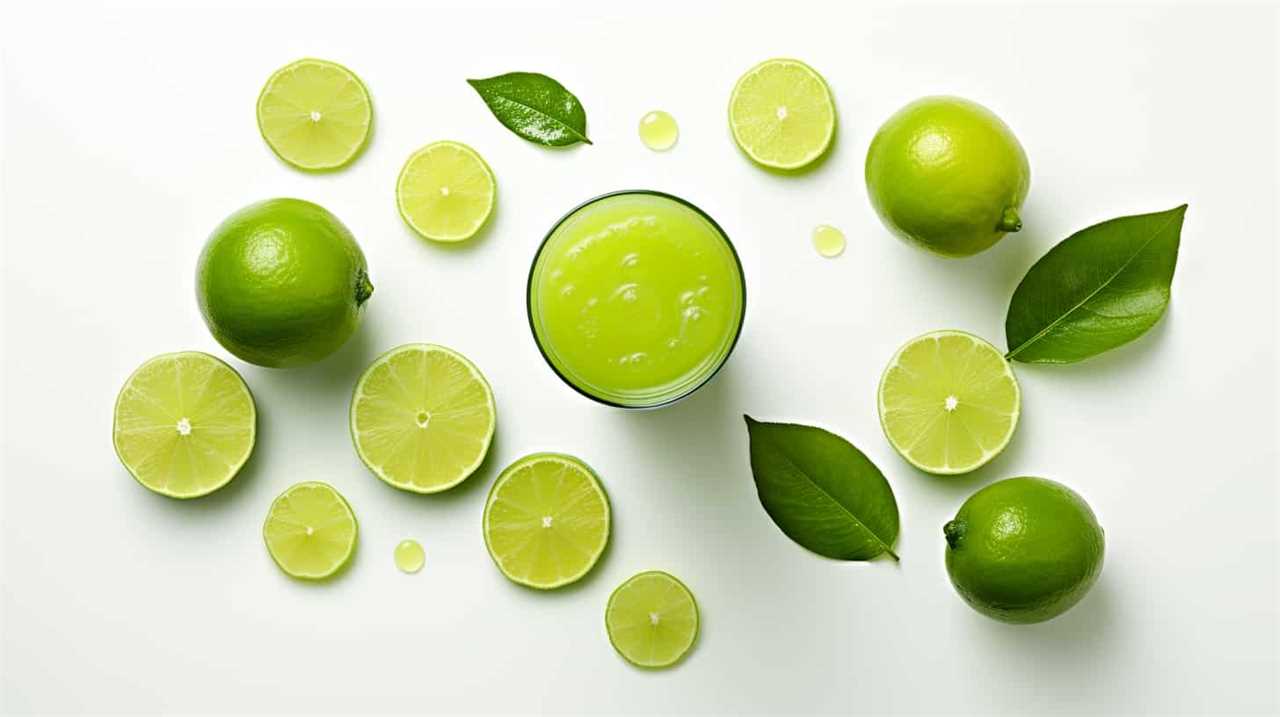
Key Takeaways
- Choose a reputable brand of aloe vera juice that prioritizes quality and uses organic, pure aloe vera.
- Avoid brands that contain added sugars or artificial ingredients.
- Use natural sweeteners like honey, agave syrup, or stevia to enhance the taste of aloe vera juice.
- Experiment with adding fruits, herbs, and other juices to create unique flavor combinations and enhance the health benefits of aloe vera juice.
Choosing the Right Aloe Vera Juice
We can enhance our experience with aloe vera juice by selecting the right brand and type for our preferences. When it comes to finding a reputable brand, it’s important to do some research and read reviews from other consumers. Look for brands that prioritize quality and use organic, pure aloe vera without any added sugars or artificial ingredients. Understanding the health benefits of aloe vera juice is also crucial in making the right choice. Aloe vera is known for its soothing properties, aiding digestion, promoting skin health, and boosting the immune system. By choosing a high-quality brand, we can ensure that we’re getting the maximum benefits from our aloe vera juice.
Now that we know how to choose the right brand, let’s move on to the next step of adding natural sweeteners.
Adding Natural Sweeteners
To enhance the flavor of our aloe vera juice, we can add natural sweeteners such as honey or agave syrup. Using alternative sweeteners not only adds sweetness but also brings unique flavors to the juice. Here are some options to consider:
- Stevia: A natural sweetener derived from the Stevia plant, it’s a zero-calorie alternative to sugar.
- Maple Syrup: This natural sweetener adds a rich and earthy flavor to the aloe vera juice.
- Dates: Pureed dates can be used to sweeten the juice while also providing essential nutrients like fiber.
In addition to using alternative sweeteners, we can enhance the flavor of aloe vera juice by adding spices and extracts. Cinnamon, ginger, or vanilla extract can add warmth and depth to the taste. By experimenting with different combinations of these natural sweeteners, spices, and extracts, we can create a flavor profile that suits our preferences.
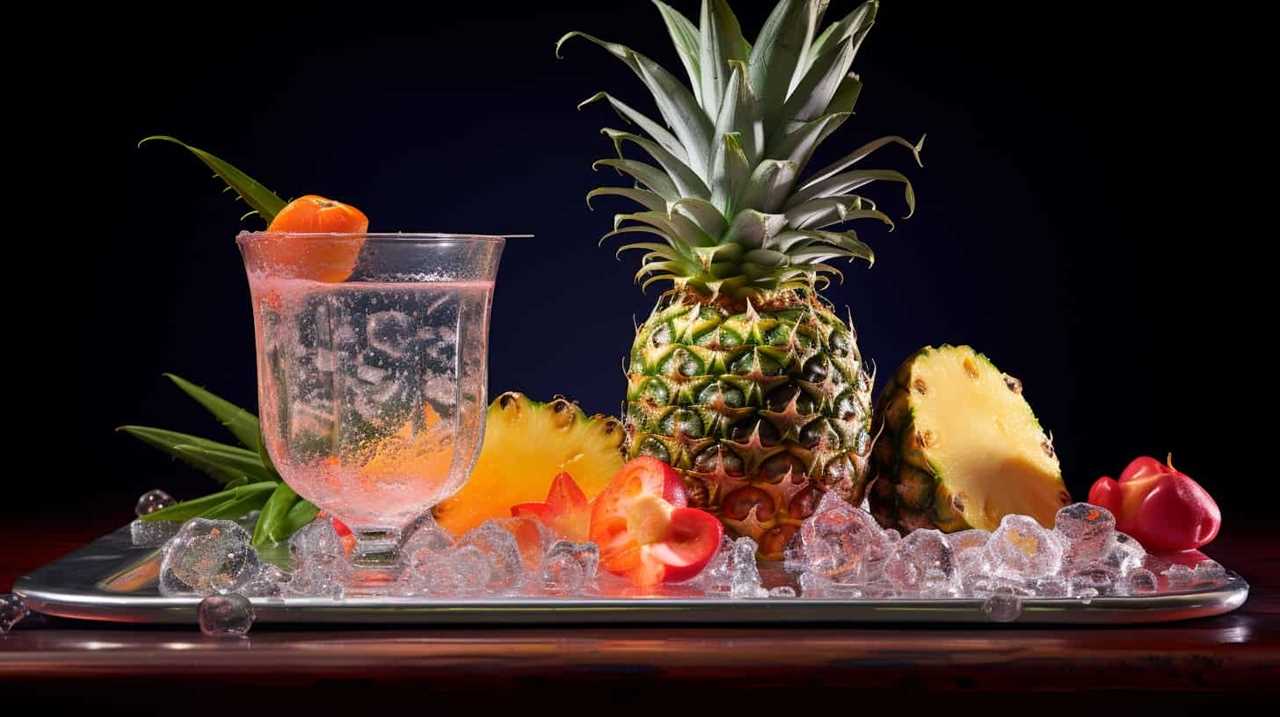
Now, let’s move on to the next section and learn how to infuse aloe vera juice with fruits and herbs to further enhance its taste.
Infusing With Fruits and Herbs
As we explore ways to make our aloe vera juice taste better, one option to consider is infusing it with fruits and herbs. Creating unique aloe vera blends by adding fruits and herbs not only enhances the flavor but also adds a touch of freshness and complexity to the juice.
Fruits like strawberries, pineapple, or citrus can add a burst of sweetness, while herbs like mint, basil, or ginger can provide a subtle yet refreshing twist. Exploring the benefits of herbal infusions can also be beneficial for our health. For example, adding a few sprigs of lavender can promote relaxation and reduce stress. Additionally, infusing aloe vera juice with rosemary can aid digestion and boost the immune system.
Blending With Other Juices
Let’s try mixing aloe vera juice with different fruit juices to create delicious and refreshing blends. Blending aloe vera juice with other fruits not only enhances its taste but also adds nutritional benefits to your drink. Here are three fruit juices that you can mix with aloe vera juice:

- Orange juice: Combining aloe vera juice with orange juice not only adds a tangy flavor but also boosts your intake of vitamin C, which is essential for a strong immune system.
- Pineapple juice: Mixing aloe vera juice with pineapple juice creates a tropical blend that isn’t only refreshing but also helps in digestion. Pineapple contains bromelain, an enzyme that aids in breaking down proteins and promoting better digestion.
- Watermelon juice: Blending aloe vera juice with watermelon juice creates a hydrating and refreshing combination. Watermelon is rich in water content and contains electrolytes that can help replenish your body’s fluids.
Experimenting With Flavor Combinations
While we can try various flavor combinations with aloe vera juice, it’s important to find the right balance to enhance its taste. Experimenting with different flavors can’t only make the juice more enjoyable but also enhance its health benefits.
Aloe vera juice is known for its numerous health benefits, such as boosting digestion, promoting hydration, and supporting the immune system. By adding complementary flavors, we can create a refreshing summer drink that not only tastes great but also provides a nutritional boost.
Some popular flavor combinations include mixing aloe vera juice with citrus fruits like lemon or orange, adding a splash of coconut water for a tropical twist, or combining it with cucumber and mint for a refreshing and cooling effect.
Don’t be afraid to get creative and find the flavor combination that suits your taste buds best!
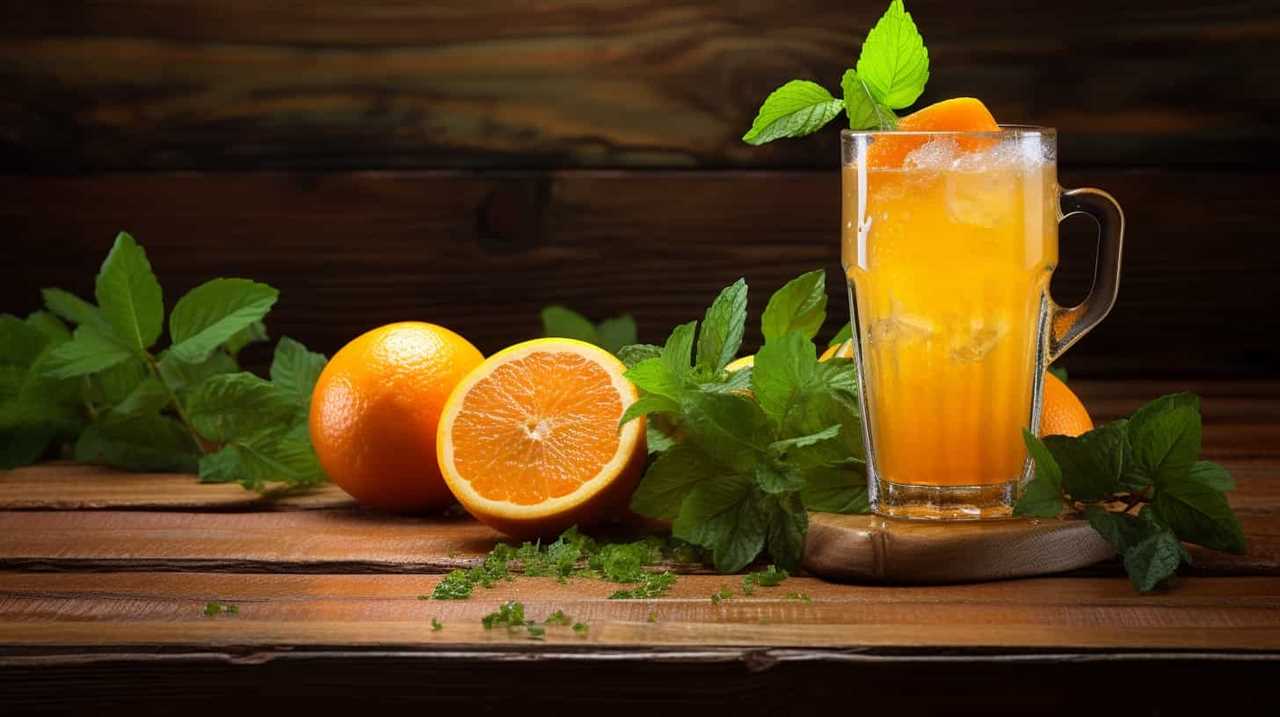
Frequently Asked Questions
Can I Use Store-Bought Aloe Vera Gel Instead of Fresh Aloe Vera for Making Juice?
Yes, you can use store-bought aloe vera gel instead of fresh aloe vera for making juice. However, it’s important to note that fresh aloe vera juice may have more health benefits due to its higher nutrient content.
How Long Can I Store Aloe Vera Juice in the Refrigerator?
Aloe vera juice can be stored in the refrigerator for up to a week. Refrigeration helps maintain the longevity and freshness of the juice, preserving its beneficial properties.
Can Aloe Vera Juice Help With Digestive Issues?
Aloe vera juice can potentially help with digestive issues when taken in appropriate dosages. However, it is important to note that there may be potential side effects. It is always best to consult with a healthcare professional before starting any new supplement regimen.
Can I Use Artificial Sweeteners Instead of Natural Sweeteners in My Aloe Vera Juice?
Using artificial sweeteners in aloe vera juice may affect its taste and potential health benefits. However, natural sweeteners like honey or stevia can enhance the flavor without compromising its nutritional value.

Is It Safe to Drink Aloe Vera Juice Every Day?
Drinking aloe vera juice daily can have numerous benefits, such as improving digestion and boosting the immune system. However, consuming it regularly may also lead to potential side effects like diarrhea or stomach cramps.
Conclusion
In conclusion, making aloe vera juice taste better is easy and enjoyable.
By choosing the right aloe vera juice and adding natural sweeteners, infusing with fruits and herbs, blending with other juices, and experimenting with flavor combinations, you can create a delightful and refreshing drink.
So go ahead and unleash your creativity in the kitchen, and transform your aloe vera juice into a sensational elixir that will transport your taste buds to paradise.
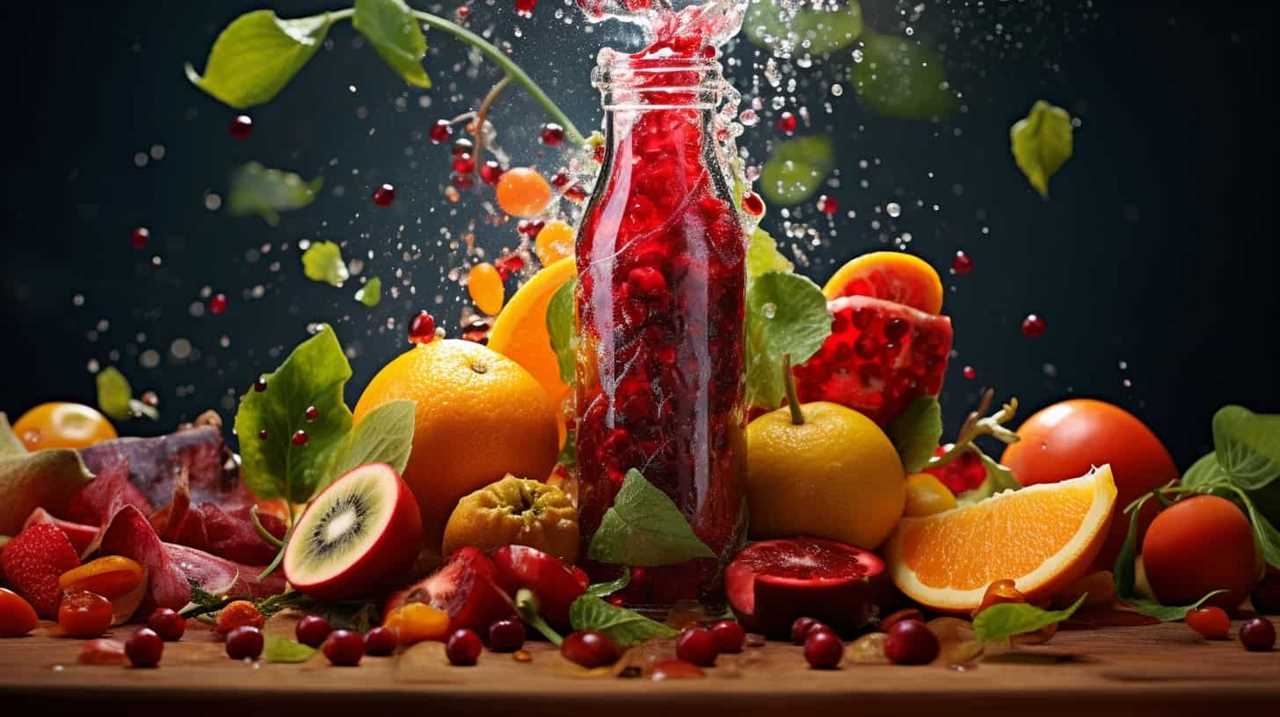
Susannah expertise lies in researching and compiling evidence-based content on juicing, nutrition, and overall health. She is committed to ensuring that The Juicery World offers accurate, up-to-date, and trustworthy information to empower readers to take control of their health. Susannah’s goal is to inspire individuals to embrace juicing as a way to nourish their bodies and live their best lives.
Juice Tips and Tricks
How to Make a Glass of Lemonade With Bottled Lemon Juice

Are you craving a cool glass of lemonade to quench your thirst? Look no further! Try out our perfect recipe using bottled lemon juice that will surely please your taste buds.
In this article, we’ll guide you through the process of creating a tangy and sweet concoction that will leave you feeling refreshed and satisfied.
So grab your ingredients and let’s get started on this delightful journey of serving ourselves and others a glass of pure lemony goodness.
Key Takeaways
- Consider the storage of the bottled lemon juice (dark glass or plastic bottles, protect from light exposure, check expiration date)
- Choose a suitable pitcher and fresh lemons for enhanced flavor
- Store the lemonade concentrate in the refrigerator to maintain freshness
- Adjust the sweetness and tartness to taste with sugar or more lemon juice, and experiment with different sweeteners or additional flavors.
Choosing the Right Bottled Lemon Juice
What are the key factors we should consider when selecting the right bottled lemon juice for our lemonade?

One important factor is how the lemon juice is stored. Look for bottles that are made of dark glass or plastic, as they help protect the juice from light exposure, which can degrade its quality. It’s also important to check the expiration date to ensure freshness.
Another benefit of using bottled lemon juice is convenience. It saves time and effort compared to squeezing fresh lemons. Additionally, bottled lemon juice provides consistent flavor, as the acidity levels are standardized.
When selecting a brand, consider reading reviews and checking for certifications, such as organic or non-GMO.
Gathering the Necessary Ingredients and Tools
How can we gather all the necessary ingredients and tools to make a glass of lemonade with bottled lemon juice?
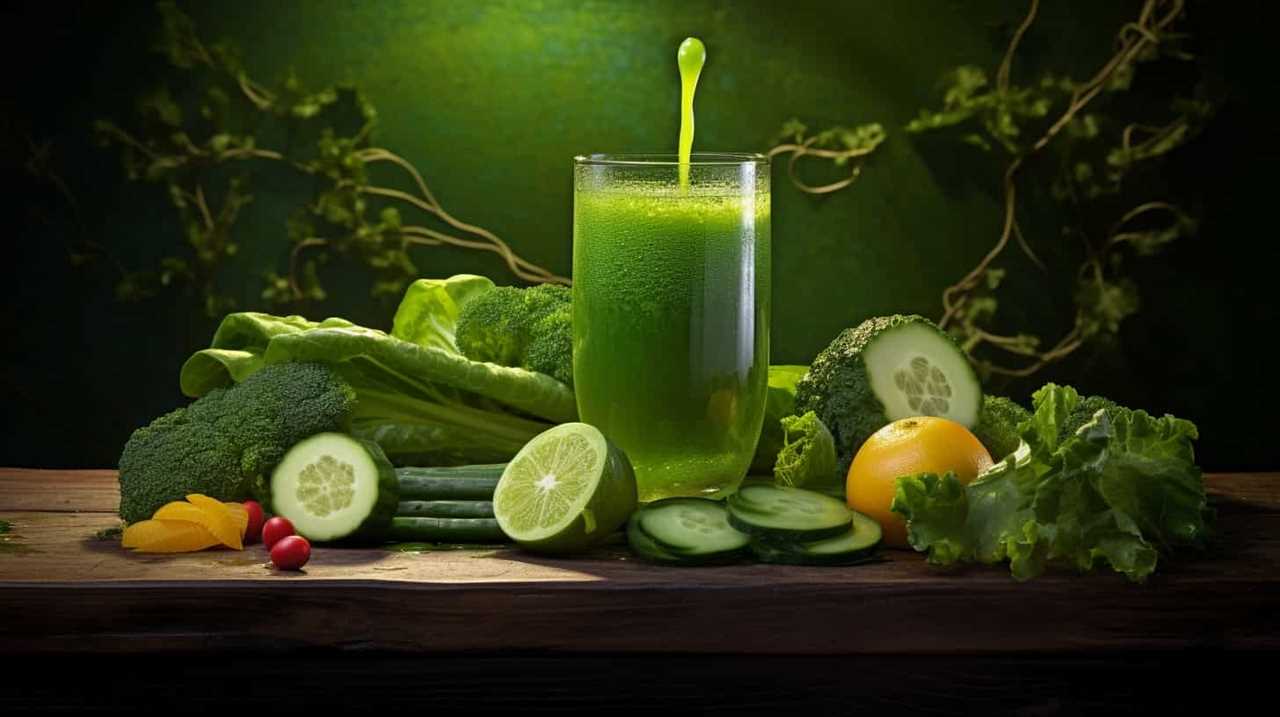
It’s important to start with the right pitcher. Look for a pitcher that’s made of glass or BPA-free plastic, as these materials won’t affect the taste of the lemonade. The pitcher should also have a lid or cover to keep the lemonade fresh and prevent spills.
Now, let’s talk about the lemons. While bottled lemon juice is convenient, using fresh lemons instead can elevate the flavor of your lemonade. Choose lemons that are firm and have a bright yellow color. Give them a gentle squeeze to ensure they’re juicy. To extract the juice, you’ll need a citrus juicer or a reamer. These tools make it easy to get every last drop of juice from the lemons.
Mixing the Lemonade Concentrate
To start mixing the lemonade concentrate, we’ll slowly pour the bottled lemon juice into the pitcher. It’s important to choose the right container for the lemonade concentrate. A pitcher with a lid or a tightly sealed container will help maintain the freshness and prevent any spills or leaks. Once the lemon juice is in the pitcher, we can move on to the next step of adding water and sweetener.
To ensure the lemonade concentrate stays fresh, it’s essential to store it properly. Keep the pitcher in the refrigerator to maintain its cool temperature and prevent any bacteria growth. If you have any leftover concentrate, transfer it to a smaller container with an airtight lid before refrigerating. This will help retain its flavor and prevent any contamination.
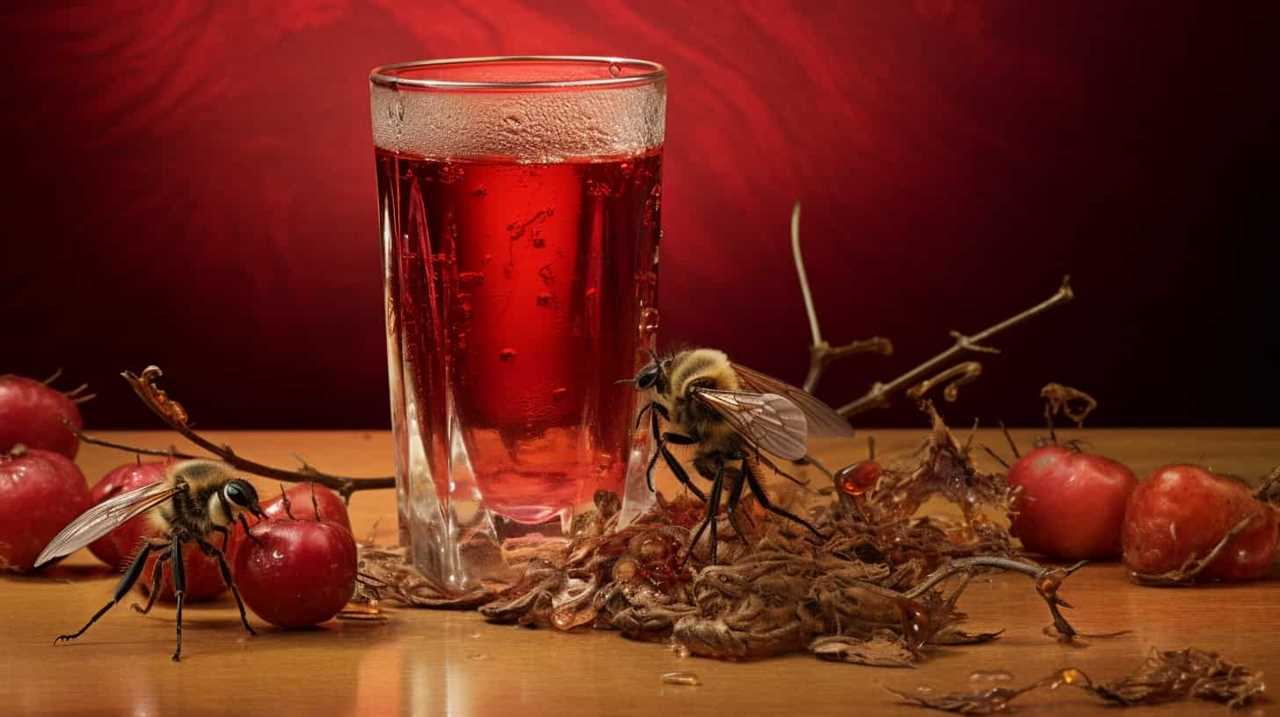
Now that we’ve mixed the lemonade concentrate, it’s time to adjust the sweetness and tartness to taste.
Adjusting the Sweetness and Tartness to Taste
We can adjust the sweetness and tartness of the lemonade to taste by adding more sugar or lemon juice, respectively. If you prefer a sweeter lemonade, simply add more sugar and stir until it dissolves completely. You can experiment with different sweeteners such as honey or agave syrup to find the perfect balance of sweetness.
On the other hand, if you want a tangier lemonade, add more lemon juice gradually, tasting as you go until it reaches your desired level of tartness.
Additionally, you can get creative with your lemonade by adding flavors like fresh mint leaves or a hint of lavender. These additions can elevate the flavor profile and create a more refreshing and unique experience.
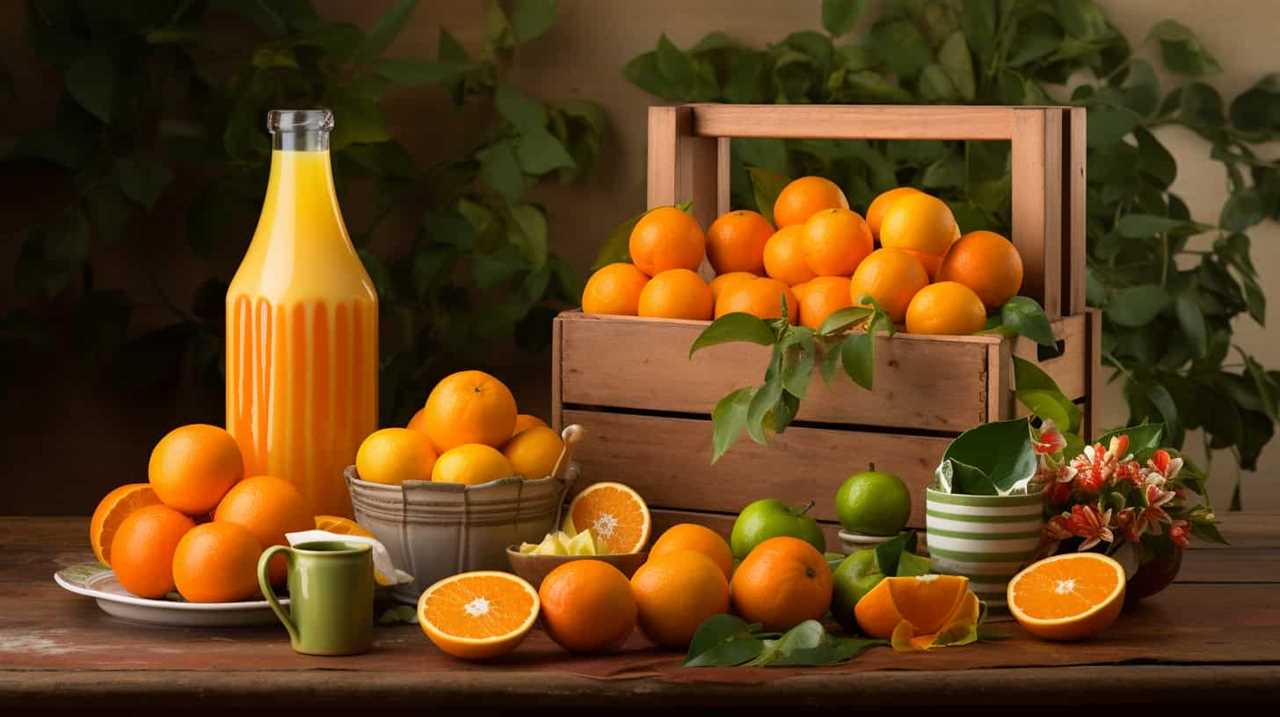
Now that we’ve adjusted the sweetness and tartness of our lemonade, let’s move on to serving and enjoying your refreshing glass of lemonade.
Serving and Enjoying Your Refreshing Glass of Lemonade
Now let’s sit back, relax, and savor our refreshing glass of lemonade.
When it comes to serving and enjoying this delightful drink, there are a few techniques and garnishing options to consider.
Firstly, serving your lemonade chilled is essential for maximum enjoyment. Ensure that you have chilled glasses or add ice cubes to the glasses before pouring the lemonade.

To add a touch of elegance, you can garnish your lemonade with a slice of lemon on the rim of the glass. For an extra burst of flavor, you could also add a sprig of fresh mint or a few berries.
Remember to gently stir the lemonade before serving to evenly distribute the flavors.
Now, take a sip, feel the refreshing tang of lemon, and let the sweet and tart flavors dance on your taste buds.
Cheers!
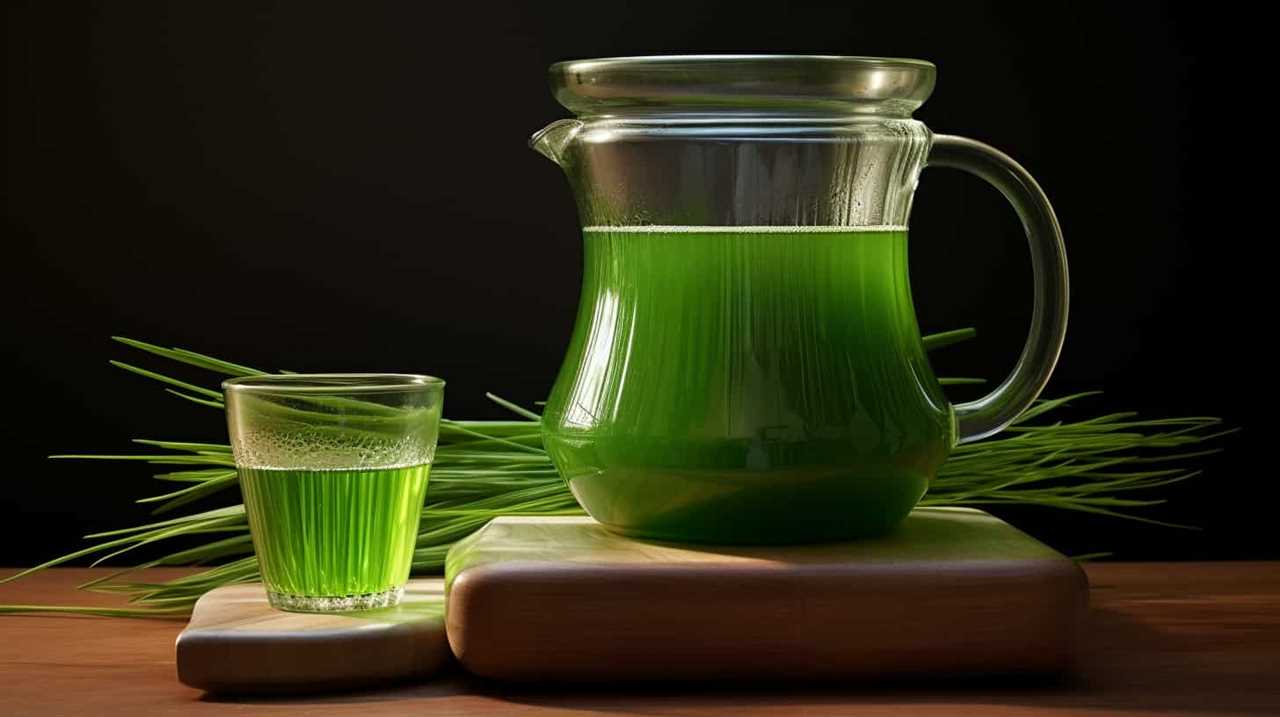
Frequently Asked Questions
Can I Use Fresh Lemons Instead of Bottled Lemon Juice?
Fresh lemons offer numerous benefits over bottled lemon juice. The taste of fresh lemons is unparalleled, providing a vibrant and tangy flavor. Incorporating fresh lemons into your lemonade will elevate its taste and give it a refreshing and authentic twist.
Can I Substitute Sugar With a Different Sweetener?
Substituting sweeteners in lemonade can enhance the flavor and offer health benefits. We’re knowledgeable about alternative sweeteners and can provide precise, detailed instructions on using them in place of sugar.
How Long Does the Lemonade Concentrate Need to Chill in the Refrigerator?
The chilling time for the lemonade concentrate in the refrigerator is typically around 1-2 hours. Using bottled lemon juice offers the benefit of convenience and consistent flavor for a refreshing glass of lemonade.
Can I Add Other Fruits or Flavors to the Lemonade?
Sure, we can definitely add different fruits or flavors to our lemonade. It’s a great way to experiment with unique flavors and create refreshing, personalized drinks. The possibilities are endless!

How Long Does the Lemonade Stay Fresh in the Refrigerator?
Lemonade made with bottled lemon juice can stay fresh in the refrigerator for about 5-7 days. To maximize shelf life, store it in an airtight container and keep it chilled.
Conclusion
And so, with a few simple steps and the right ingredients, a glass of refreshing lemonade is born.
Like a symphony of flavors dancing on your taste buds, this tangy elixir quenches thirst and brings joy on a hot summer day.
Just a sip transports you to a world of citrusy delight, where the sweetness and tartness blend harmoniously.

So go ahead, indulge in the art of lemonade-making and savor every drop of this sun-kissed nectar.
Cheers to the perfect glass of lemonade!
Susannah expertise lies in researching and compiling evidence-based content on juicing, nutrition, and overall health. She is committed to ensuring that The Juicery World offers accurate, up-to-date, and trustworthy information to empower readers to take control of their health. Susannah’s goal is to inspire individuals to embrace juicing as a way to nourish their bodies and live their best lives.
Juice Tips and Tricks
How to Know if Orange Juice Is Bad

We’ve all been in that situation before – reaching for a glass of orange juice and hesitating, unsure if it’s still okay to drink. Fear not! This article will give you the knowledge you need to determine for sure if your orange juice is still fresh or if it’s gone bad.
With a blend of scientific precision and practical tips, we’ll explore color changes, strange smells, off taste, texture changes, and mold or growth that may indicate spoilage.
Let’s dive in and serve ourselves a refreshing glass of certainty!
Key Takeaways
- Color changes in orange juice can indicate a loss of freshness and shelf life extension, but it doesn’t necessarily mean the juice is bad.
- Unusual or off-putting odors in orange juice, such as sour or fermented scents, can be a sign of poor quality.
- An off taste in orange juice, such as sour, bitter, or fermented flavors, suggests that the juice is spoiled.
- Texture changes in orange juice, such as pulp separation or a thicker consistency, can occur as the juice ages, so it’s important to consume it before the expiration date.
Color Changes in Orange Juice
We should be aware that color changes can indicate whether orange juice is bad.

When it comes to orange juice, color is a crucial factor to consider. As oranges are exposed to air, an oxidation process occurs, which leads to changes in color. Fresh orange juice has a vibrant orange hue, indicating its freshness and high nutritional value.
However, as time passes, the juice may undergo a color change, turning dull or brownish. This change in color is a result of the oxidation process, which affects the flavor and quality of the juice. It’s important to note that while a change in color doesn’t necessarily mean the juice is bad, it does indicate that the juice is losing its freshness and shelf life extension.
Therefore, it’s advisable to consume orange juice when it’s at its freshest, as indicated by its vibrant orange color.
Strange Smells in Orange Juice
When it comes to evaluating orange juice, we should be cautious of any strange smells or odors. A fresh, pleasant smell is indicative of good quality orange juice. However, if you notice any unusual or off-putting odors, it may be a sign that the juice has gone bad. These smells can range from a sour or fermented scent to a rancid or moldy aroma.
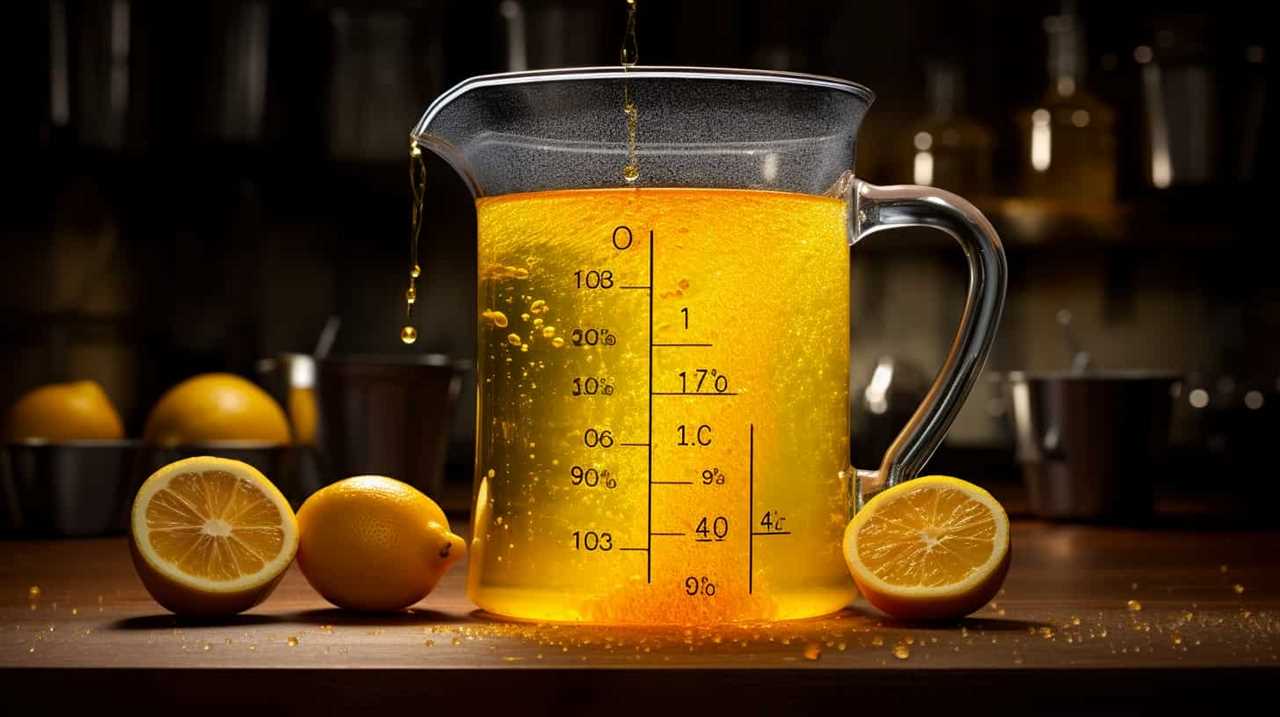
It’s important to note that while some natural variations in scent can occur due to the specific variety of oranges used, any strong or unpleasant smells should raise concerns. If you have citrus fruit allergies, it’s especially important to pay attention to the smell of orange juice, as it could indicate the presence of spoilage or contamination.
Ensuring the quality of orange juice is essential as it’s a popular beverage known for its health benefits, including being rich in vitamin C and antioxidants.
Off Taste of Orange Juice
Our taste buds can detect even the slightest hint of an off taste in orange juice, which can indicate that it has gone bad. The taste of orange juice should be fresh, tangy, and slightly sweet. If it tastes sour, bitter, or fermented, it’s likely spoiled.
One common cause of an off taste in orange juice is the use of overripe oranges. When oranges become overripe, their flavor profile changes, resulting in a less pleasant taste. Another factor to consider is the expiration date. Orange juice that has passed its expiration date is more likely to develop an off taste. It’s important to check the expiration date before consuming orange juice to ensure its freshness and quality.
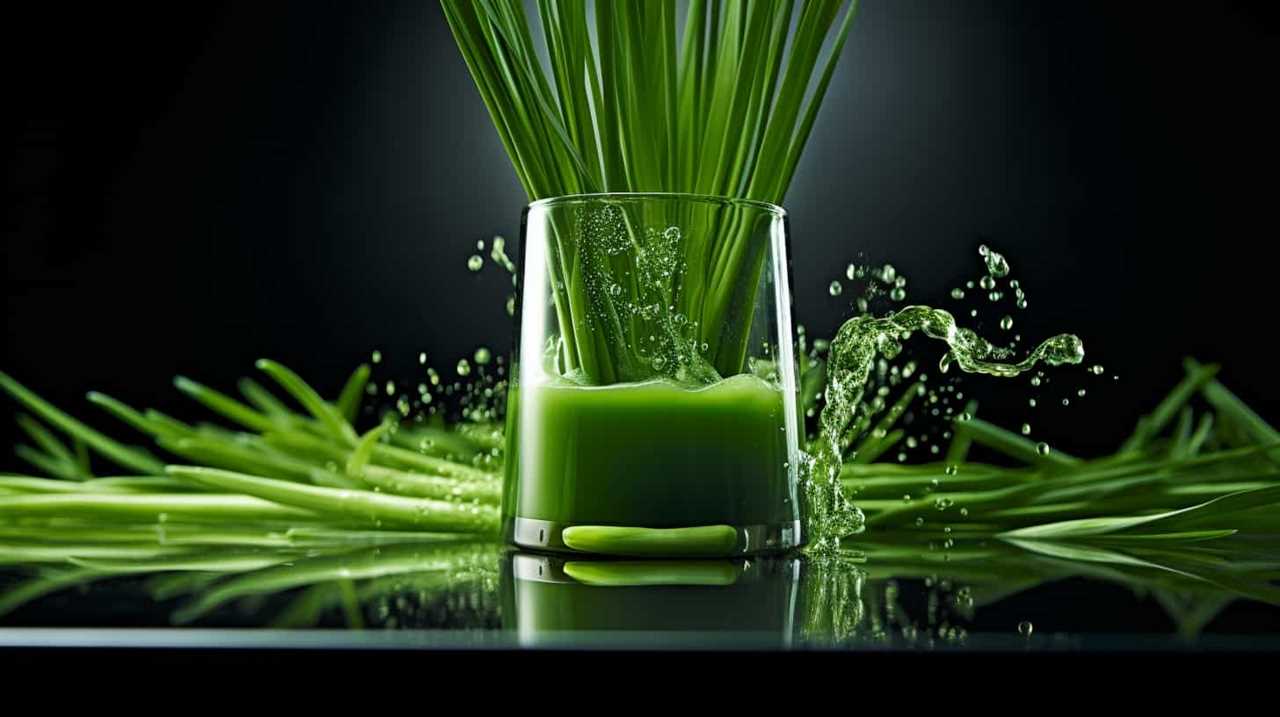
Now, let’s move on to discuss the texture changes in orange juice.
Texture Changes in Orange Juice
As we explore the texture changes in orange juice, it’s important to note that certain factors can cause it to become thicker or develop sediment. One common texture change in orange juice is pulp separation, where the pulp separates from the liquid and settles at the bottom. This can occur naturally over time, as the pulp particles become denser and sink.
Another factor that can affect the texture of orange juice is the expiration date. As orange juice ages, it may start to develop a thicker consistency and even form sediment. This is a result of the natural breakdown of the juice’s components. Therefore, it’s crucial to check the expiration date on orange juice and consume it before it reaches its expiration date to avoid any undesirable texture changes.
Mold or Growth in Orange Juice
We need to be aware of the possibility of mold or other growth occurring in orange juice. Mold can develop in orange juice if it isn’t stored properly or if it has passed its expiration date.
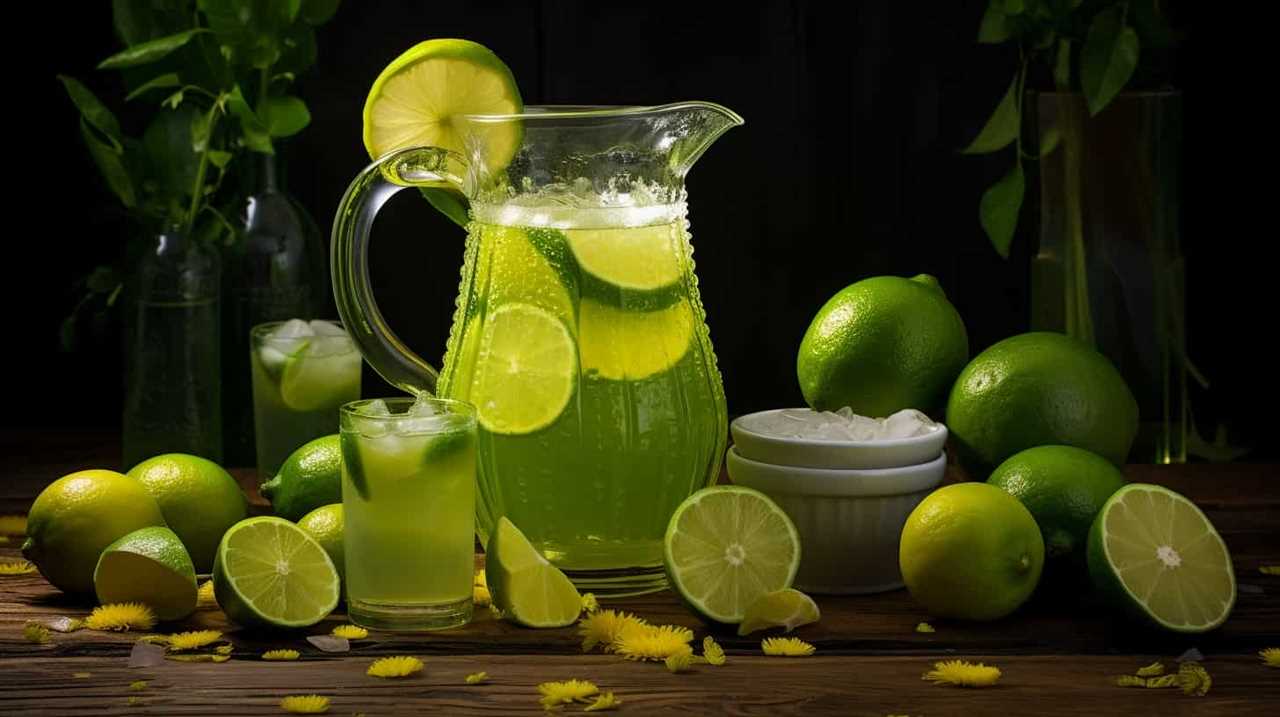
To prevent mold growth, it’s important to follow these steps:
- Store orange juice in the refrigerator at a temperature below 40°F (4°C).
- Check the expiration date on the bottle before consuming. Discard any orange juice that has expired.
- Keep the container tightly sealed to prevent air and moisture from entering, as these can promote mold growth.
Regularly inspecting orange juice for any signs of mold or unusual growth is essential. If you notice any discoloration, a strange odor, or visible mold, it’s best to discard the juice to avoid any potential health risks.
Frequently Asked Questions
Can Orange Juice Go Bad if It’s Stored in the Freezer for Too Long?
Frozen orange juice can potentially lose its nutrients and change its taste if stored in the freezer for too long. It is important to check for signs of spoilage before consuming it.
How Long Can Orange Juice Stay Fresh in the Refrigerator Once It’s Opened?
Once opened, orange juice can stay fresh in the refrigerator for about 7-10 days. To maintain its freshness, store it properly by keeping it tightly sealed and at a consistently cold temperature.
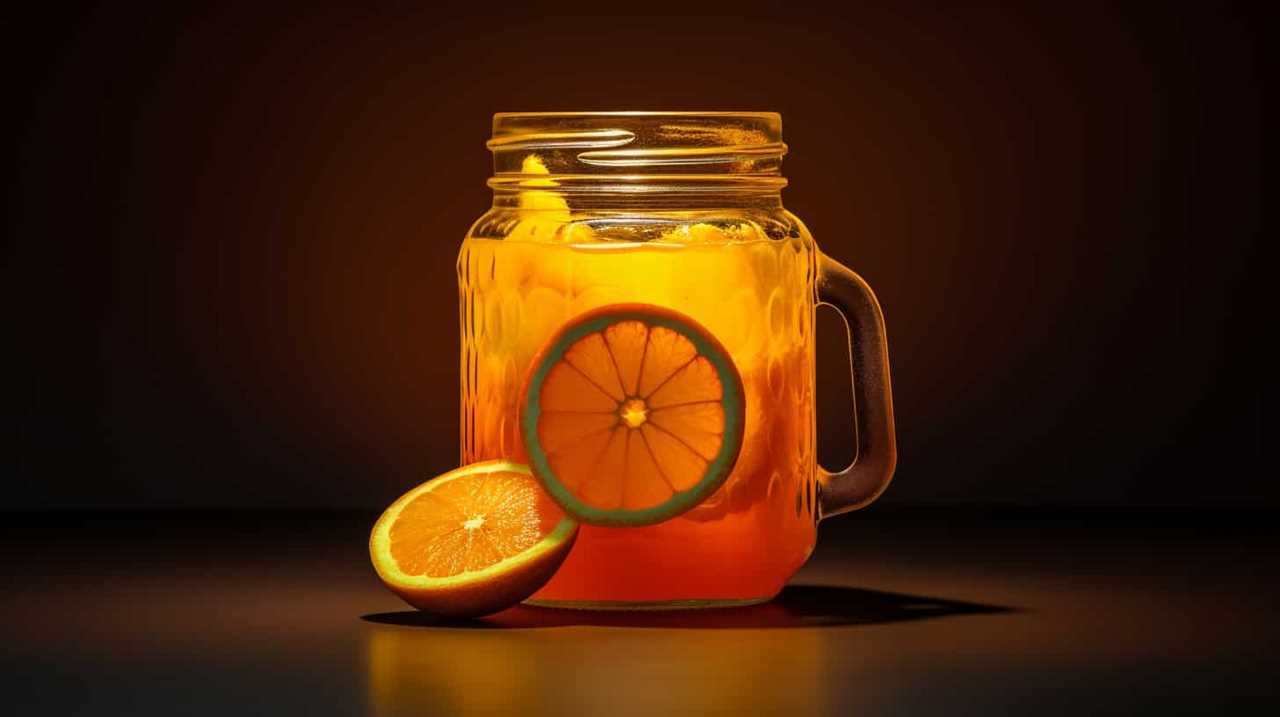
Is It Safe to Consume Orange Juice That Has Been Left Out at Room Temperature Overnight?
Left out orange juice may not be safe to drink as it can harbor harmful bacteria. Signs of spoiled orange juice include a sour smell, mold growth, and a change in color or taste.
Can Orange Juice Develop Harmful Bacteria if It’s Past Its Expiration Date but Still Looks and Smells Fine?
Orange juice can cause food poisoning if it develops harmful bacteria, even if it looks and smells fine. Signs of spoiled orange juice include a sour smell, mold growth, and a change in color or taste.
Does the Nutritional Value of Orange Juice Decrease as It Starts to Go Bad?
As orange juice goes bad, its nutritional value decreases. The longer it sits on the shelf, the more nutrients it loses. Signs of spoilage include a sour smell, off taste, and mold growth.
Conclusion
In conclusion, determining if orange juice is bad requires careful observation of color changes, strange smells, off taste, and texture changes. Just like a detective investigating a case, we must rely on our senses to detect any signs of spoilage.
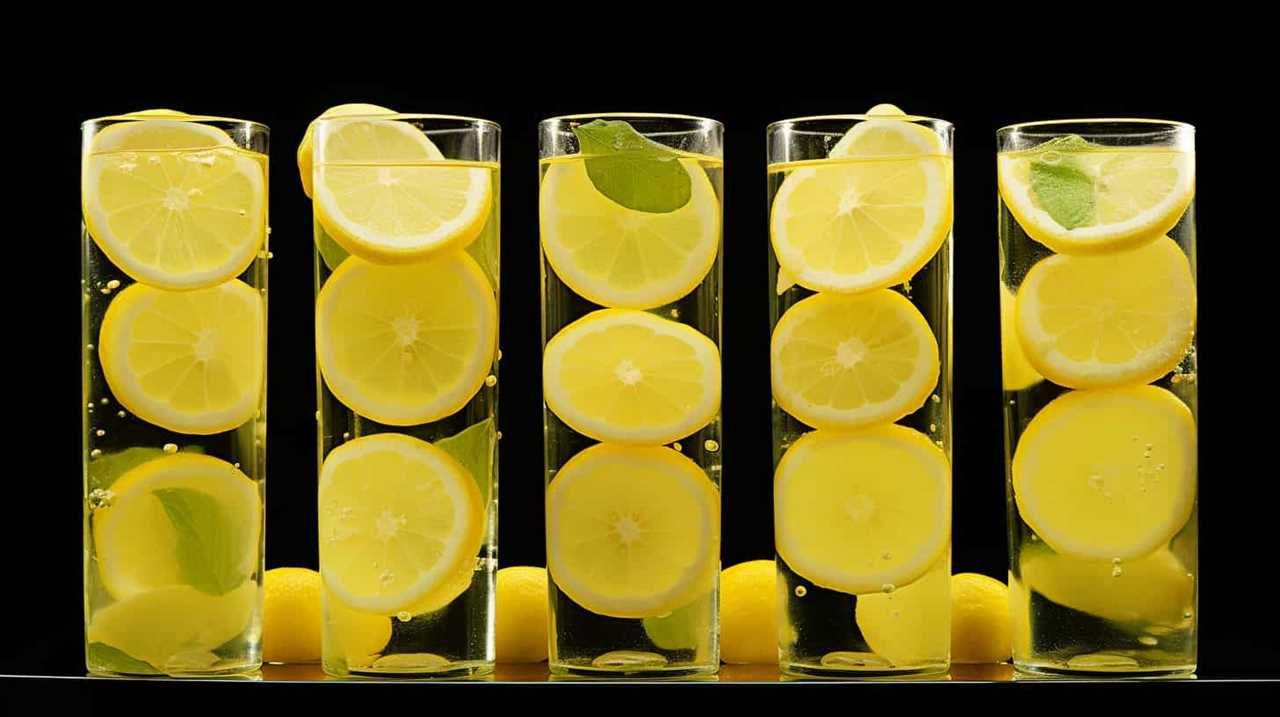
If we detect mold or growth in the orange juice, it’s a clear indication that it’s no longer safe to consume. By remaining vigilant and attuned to these indicators, we can ensure that our orange juice is always fresh and enjoyable.
Susannah expertise lies in researching and compiling evidence-based content on juicing, nutrition, and overall health. She is committed to ensuring that The Juicery World offers accurate, up-to-date, and trustworthy information to empower readers to take control of their health. Susannah’s goal is to inspire individuals to embrace juicing as a way to nourish their bodies and live their best lives.
-
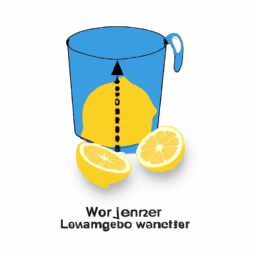
 Juice Tips and Tricks3 months ago
Juice Tips and Tricks3 months agoHow Much Lemon Juice Is Equal To Half A Lemon
-

 Juice Tips and Tricks3 months ago
Juice Tips and Tricks3 months agoHow Much Lemon Juice Concentrate Equals One Lemon
-

 Juice Tips and Tricks3 months ago
Juice Tips and Tricks3 months agoHow Long Can You Drink Orange Juice After The Expiration Date
-

 Fruit Juice Varieties2 months ago
Fruit Juice Varieties2 months agoTop 11 Most Loved Fruit Juice Varieties
-

 Juice Tips and Tricks3 months ago
Juice Tips and Tricks3 months agoHow Much Lemon Juice Is Equivalent To 1 Lemon
-

 Organic and Natural Juices2 months ago
Organic and Natural Juices2 months ago8 Best Organic Brands for Fruit Juice
-

 Juice Tips and Tricks3 months ago
Juice Tips and Tricks3 months agoHow Much Lemon Juice Is Equivalent To One Lemon
-

 Juice Manufacturing Process2 months ago
Juice Manufacturing Process2 months ago9 Best Steps in Industrial Juice Manufacturing Process



